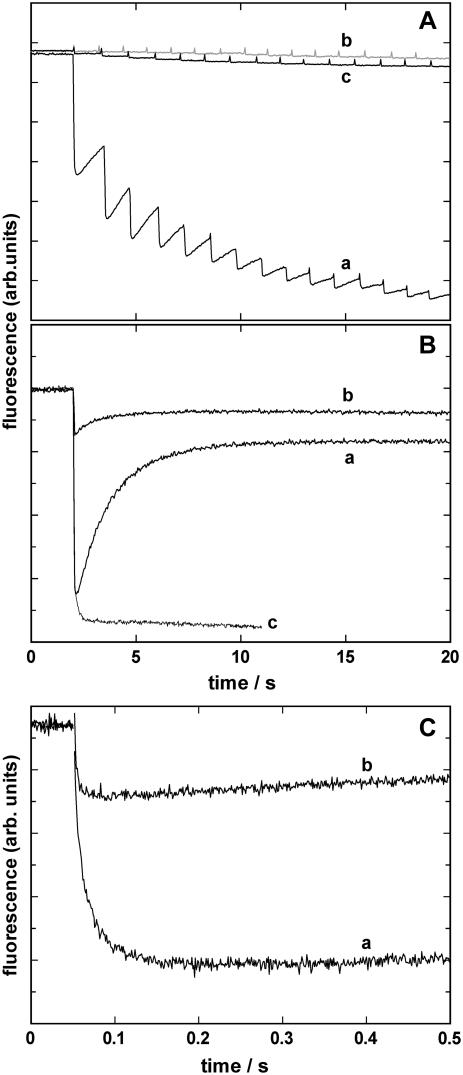FIGURE 3.
Time course of pH jump induced 2BITC fluorescence signals. (A) A sequence of 15 UV flashes was applied to cuvettes filled with electrolyte containing 10 mM NaCl, 10 μM BAPTA, 600 nM 2BITC, and (a) 9 μg/ml Ca-ATPase and 300 μM MNPS·Na, (b) 9 μg/ml Ca-ATPase and 300 μM of MNP, (c) no Ca-ATPase but 300 μM MNPS·Na . (B) A single UV flash was applied to visualize the partial recovery of the fluorescence amplitude in the case of a pH jump in the presence of 9 μg/ml Ca-ATPase and 300 μM MNPS·Na (trace a). For comparison the same experiment was repeated in the presence of 300 μM MNPS·Na and DOPC vesicles (trace b) or open membrane fragments containing SR Ca-ATPase and 300 μM MNPS·Na (trace c). (C) Experiments as shown in panel B were repeated with higher time resolution to show the initial fluorescence decrease. Trace a represents the experiment in the presence of 300 μM MNPS·Na and 9μg/ml Ca-ATPase (2.5 μg/ml lipid) in the form of SR vesicles. In trace b 9 μg/ml pure DOPC vesicles were added instead of the SR vesicles.

